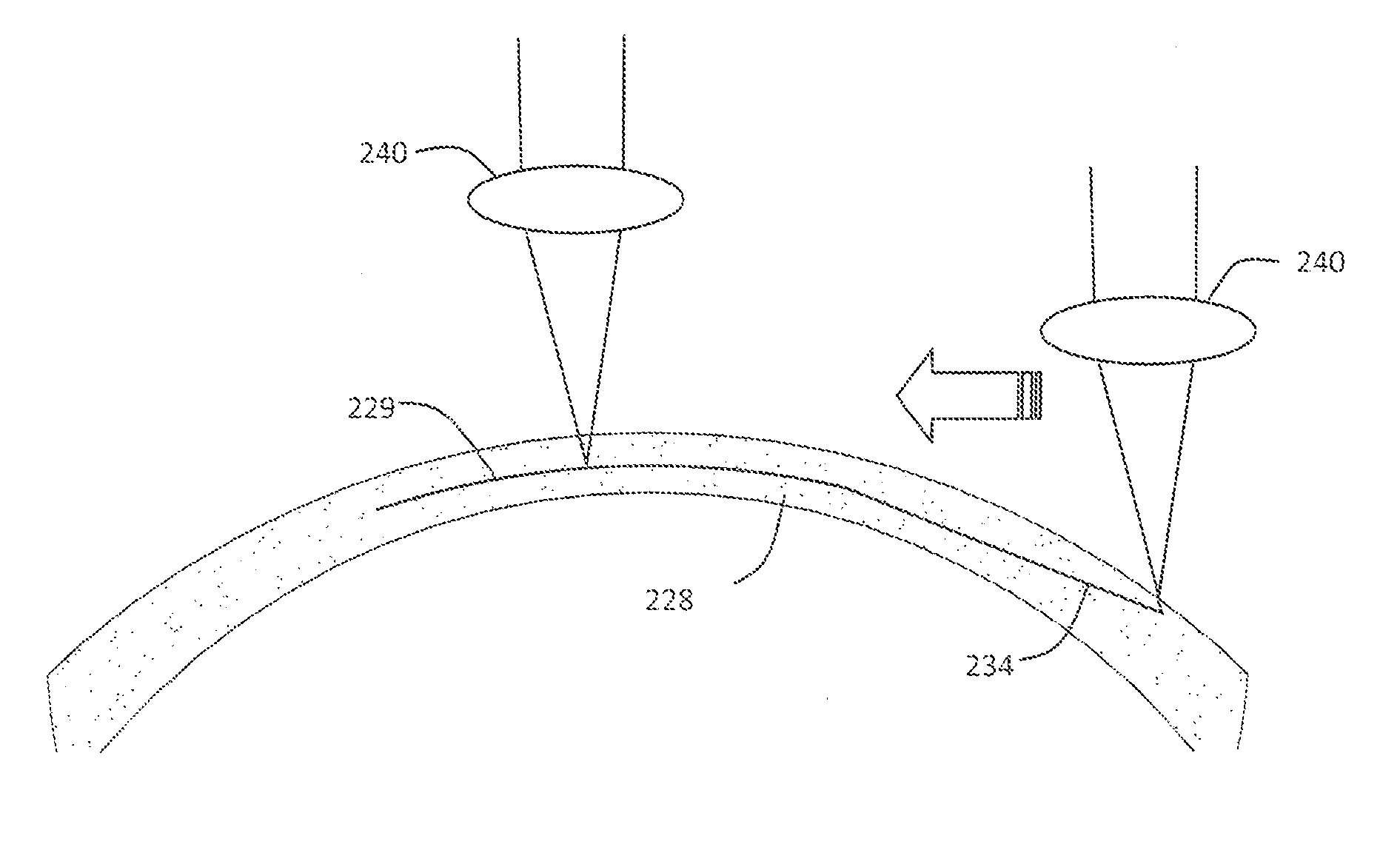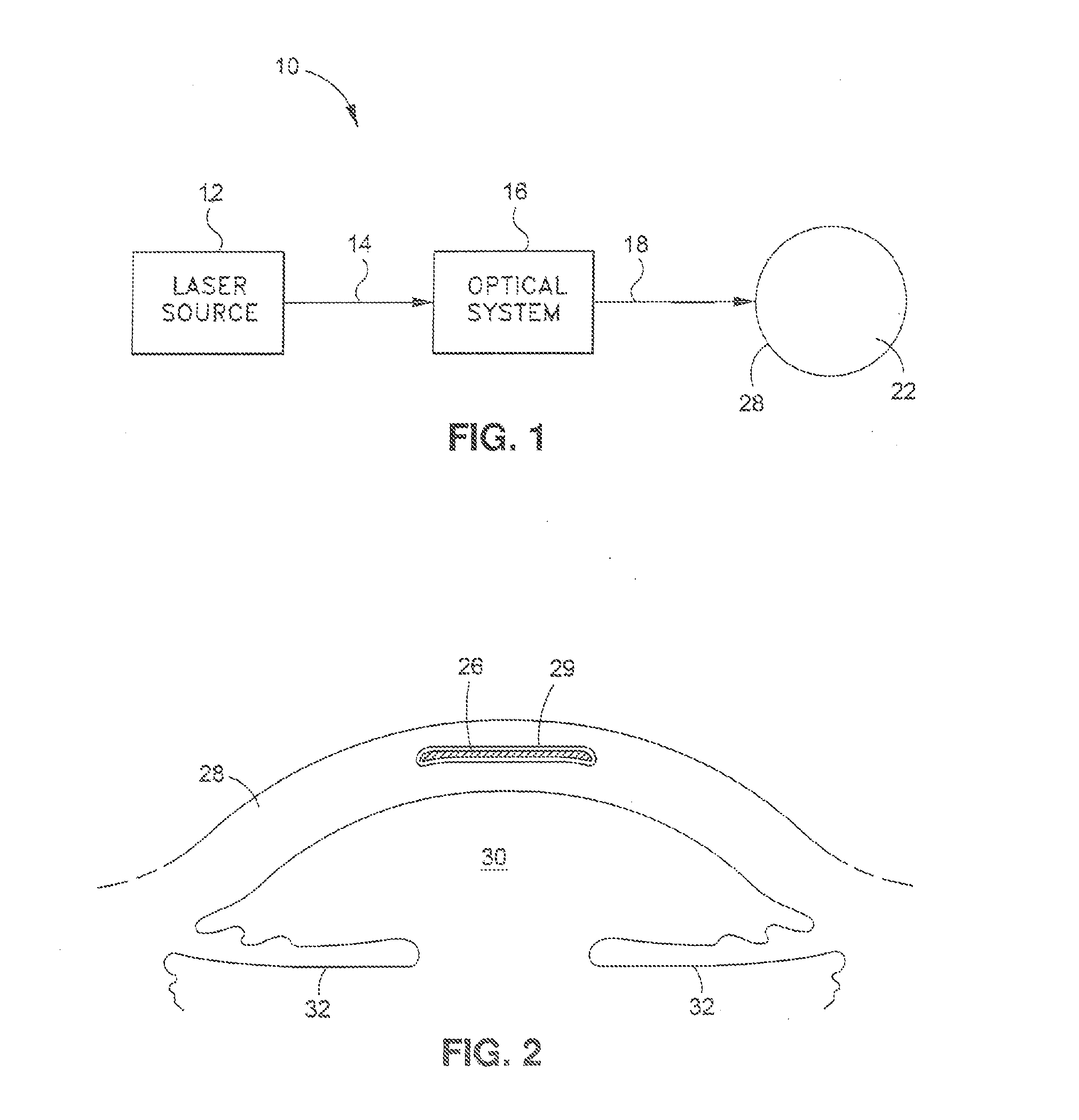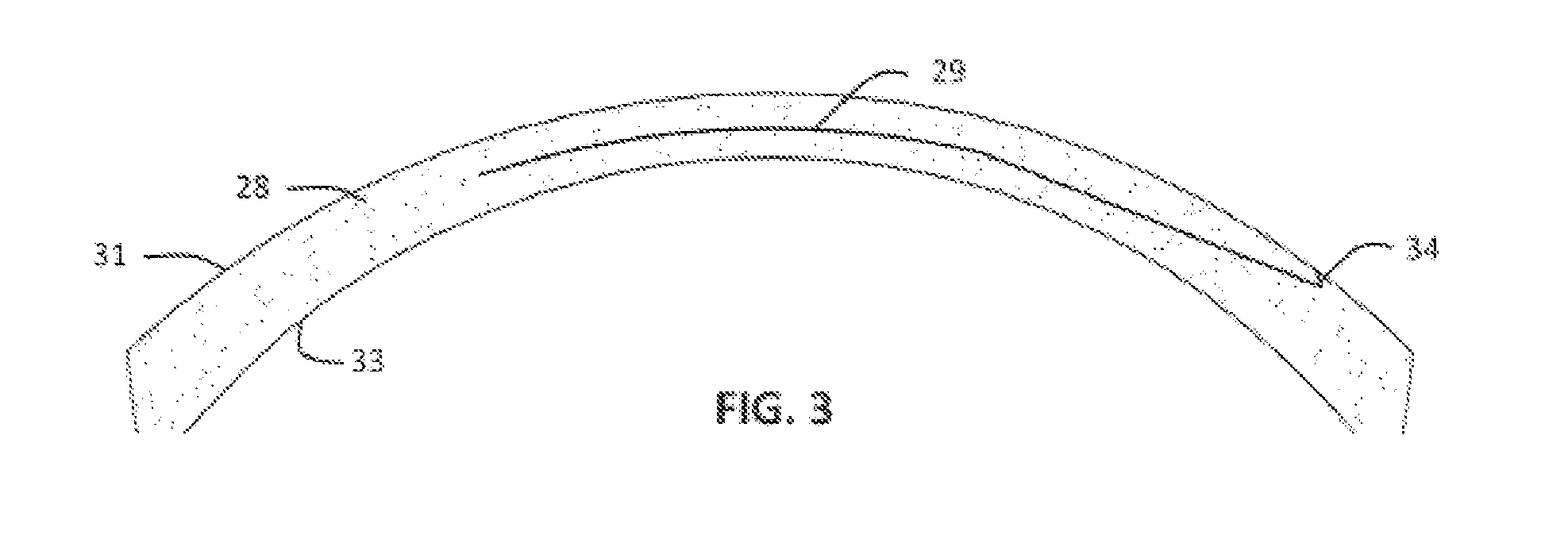Method for Laser Cutting a Corneal Pocket
a laser cutting and corneal pocket technology, applied in the field of ocular surgery, can solve the problems of blurred vision, difficulty in reading fine print, and inconvenient switching between reading glasses and distance glasses
- Summary
- Abstract
- Description
- Claims
- Application Information
AI Technical Summary
Benefits of technology
Problems solved by technology
Method used
Image
Examples
Embodiment Construction
[0024]The invention will now be described with reference to the drawing figures, in which like reference numerals refer to like parts throughout. An embodiment in accordance with the present invention provides an apparatus and method for creating a flap or pocket in the cornea. This lens or pocket preferably is created by a laser used in conventional lasik surgery.
[0025]FIG. 1 illustrates a laser surgery apparatus 10 for laser surgery to create an intracorneal pocket in accordance with an embodiment of the invention. The laser surgery apparatus 10 can include a laser source 12 which can generate and control, using software, a source beam 14 having a continuous train of laser pulses of substantially constant pulse duration and pulse energy. In one embodiment of the laser surgery apparatus 10, a source beam 14 can take the form of a femtosecond or a nanosecond laser. The source beam 14 can also have a wavelength greater than 800 nanometers and a pulse energy in a range of approximatel...
PUM
 Login to View More
Login to View More Abstract
Description
Claims
Application Information
 Login to View More
Login to View More - R&D
- Intellectual Property
- Life Sciences
- Materials
- Tech Scout
- Unparalleled Data Quality
- Higher Quality Content
- 60% Fewer Hallucinations
Browse by: Latest US Patents, China's latest patents, Technical Efficacy Thesaurus, Application Domain, Technology Topic, Popular Technical Reports.
© 2025 PatSnap. All rights reserved.Legal|Privacy policy|Modern Slavery Act Transparency Statement|Sitemap|About US| Contact US: help@patsnap.com



